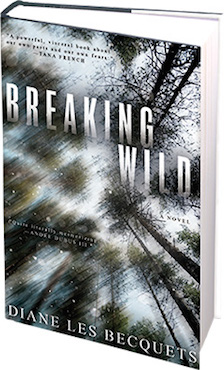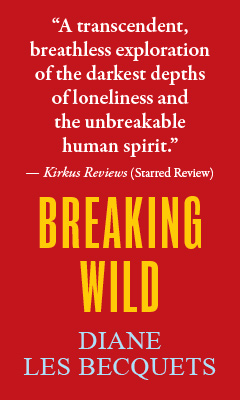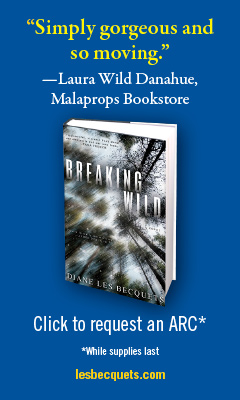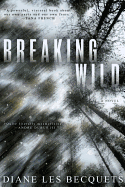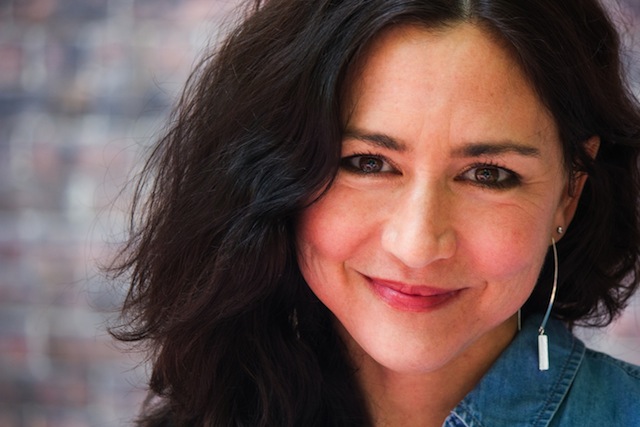Breaking Wild
by Diane Les Becquets
Breaking Wild is the first adult novel by Diane Les Becquets, author of highly praised young adult novels including Season of Ice and The Stones of Mourning Creek. Carefully crafted characters and measured pacing define this tale of two women's parallel personal journeys in the wilderness of northwestern Colorado.
Amy Raye Latour is a wife and mother, an accomplished outdoorswoman and a strong personality. She is on a camping and hunting trip with two male friends. The men have brought down elk with rifles, but Amy Raye hunts with a compound bow; she needs to get away from her companions to find the stillness and quiet required to get close enough to her prey. So she sneaks away from camp on their last morning, with only a light pack. When she doesn't show up again that night, her friends call local authorities.
Pru Hathaway lives in the nearby town of Rio Mesa with her teenaged son, Joseph, and her dog, Kona. Pru is an archeological law enforcement ranger with the Bureau of Land Management; Kona is certified for search-and-rescue, including avalanche conditions, The sheriff, Colm McCormac, is a friend; when he gets the call about Amy Raye, he turns to Pru.
The personalities of the two women shape the novel: they are both more complicated than they seem on first meeting, and while they are very different, both have concealed and storied pasts. One of Les Becquets's triumphs is the tantalizingly paced release of new information: about Pru's personal history, about Amy Raye's troubles and the tangled web of her life, any strand of which may be implicated in her disappearance. Similarly meticulous is the build-up to Pru and Amy Raye's expected meeting. This is the story of a chase: Pru and Kona pursue Amy Raye through the backwoods, tracking her movements through drifting snow and rugged terrain, hoping to find her before she succumbs to a mountain lion or the harsh winter conditions. As one party makes a move, the other makes a corresponding move, and the pressure increases. Breaking Wild is not only a masterpiece of characterization, but a feat of taut anticipation and suspense.
Somewhat relieving this tension are flashback interludes to Pru's and Amy Raye's respective histories, and the personal dramas of the present timeline. Pru's son, Joseph, although not entirely untroubled, is a sweet young man; he wonders if Pru and the sheriff--himself an intriguing minor character--should date. Amy Raye's marriage is not without its cracks, a situation perhaps symbolized by the description of her hunting in the early pages: her husband prefers to shoot with a camera, and has asked her not to keep guns in the house. Thus she uses the compound bow instead, and it is this choice that causes her to leave camp alone in the first place.
Three sections--entitled "Bear," "Cougar" and "Deer"--further shape the book; chapters within those sections alternate between Pru's first-person perspective and a third-person view of Amy Raye's experiences. This format is telling. The natural landscape of northwestern Colorado is a pivotal feature, the backdrop that sets the stakes for a spectacle of life and death, informing every detail, every decision made. Both Pru and Amy Raye repeatedly note the temperature and humidity level, the wind strength and direction, in judging where, when and if to travel. When Pru first tells Kona to "go find," on page 36 of more than 300, the reader knows that Amy Raye will not be so easily located. From then on, animal life and nature's rhythms are increasingly crucial to Amy Raye's subsistence. Is she hunting, or being hunted? She has gone into the wild seeking something undefined: "In that moment she felt everything--life, death, the tangy sweet smell of pine, the freshness of the rain. It was the immensity of those feelings that drove her mad at times."
While the niceties of backwoods survival are fully developed, the drama of the natural world is less central to the story than the human dramas. The travels of Amy Raye and Pru give them room to grow, and to ask and answer questions of how to love; what a healthy relationship looks like; the nature of addiction; and the meaning and forms of family and community. Indeed, part of what Amy Raye has gone into the woods to find is a connection to her past; Pru found solace in the outdoors when she suffered a personal tragedy. So the two threads of the story--family and community, natural wilderness--intertwine, just as the lives of two women do.
Les Becquets portrays a credible and compelling cast of characters, especially the two strong women at its center. Breaking Wild is a rare novel in its mastery of both plot and character, with deliberate rhythm, thrilling suspense and a striking backdrop. Its breathless momentum carries through to a dramatic conclusion. --Julia Jenkins



